What's new on Intel's 10th generation CPUs?
Intel went up to challenge AMD's Ryzen 3000 with the announcement of the new 10th-generation desktop processors. Named Comet Lake-S , these CPUs bring a host of improvements and a few notable new features. In this article, I will introduce Intel's latest chip , which helps those who are preparing to build a new PC rig or looking for a pre-configured PC to consider.
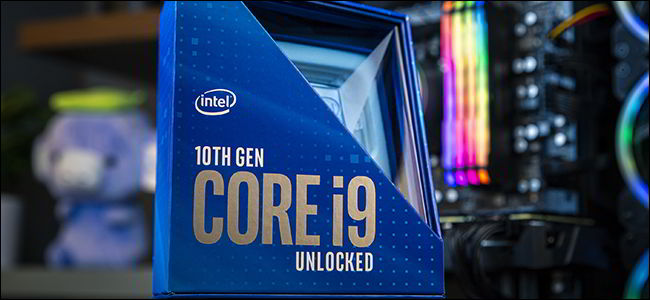
Intel announced the new Comet Lake desktop chip on April 30. Earlier that month it also introduced new Comet Lake mobile processors for laptops and other smaller PCs. I won't go into the laptop segment, but you should still know that Intel will release 100 laptops with new 10th generation processors this year. As for desktop processors (PCs), they will start rolling out in May 2020.
1. CPU is a lot of cores
Comet Lake CPUs have a lot of cores. The Core i9-10900K is one of the top chips with 10 cores and 20 threads . With such a large number of cores x the number of threads it helps to process commands from the system at 'altar' speed, making the system work well and extremely smooth.
One difficulty is that software developers must utilize all of those cores. Many developers do not intend to, simply because the way the software works does not need to use so much power.
However if your workload involves heavy applications, like photo editing or video / gaming, then all of those cores can help.
2. Hyper-threading
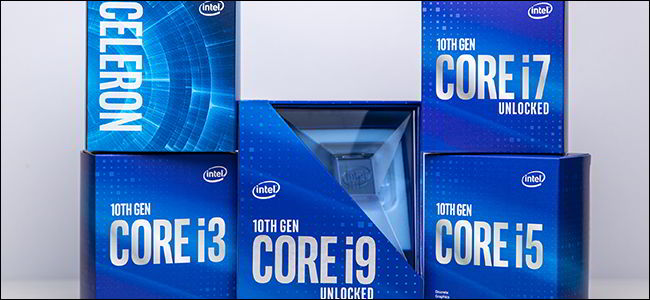
Hyperthreading is Intel's name for dividing a ' real core ' into two ' virtual cores '. For the operating system, you get two cores for the price of one core. This means your machine can process it faster. In the past, Intel has been very strict with desktop hyper-threading, limiting it to Core i7 and Core i9 processors.
With Comet Lake , however , you'll see hyperthreading found on weaker chips like Core i3 , and even Pentium . Generally with Comet Lake-S , Core i3 chips now have four cores and eight threads, Core i5 has six and 12, Core i7 has eight and 16, and Core i9 has 10 and 20 ( those were huge numbers that previously had to spend a mountain of money to buy ).
With such a large number of threads that means Intel saves users a lot of money, we can now use the low-end CPU to play games for a cheaper price.
3. New motherboard
CPU manufacturers often try to make the CPU backwards compatible with older motherboards for a few generations, but that doesn't last forever. Currently the need for new processors requires the CPU sockets of the new motherboard and therefore the production of new motherboards that support the CPU.
Comet Lake-S uses the new LGA1200 Socket . New motherboards will be easy to spot as they have specific symbols including Z490, B460, H470 and H410.
4. Improve heat transfer efficiency
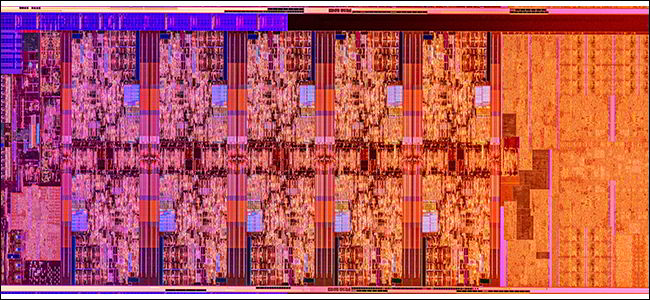
The biggest problem any computer system has to deal with is ' how to cool '. When the parts get too hot, the computer's safety mechanism forces the processor and other hardware to decrease performance.
In other words, the CPU's power is partly limited by temperature. At that time, the problem of temperature caused a lot of manufacturers to have a headache, looking to use the most effective heat transfer material so that heat dissipation devices such as fans, or liquid cooling can radiate heat first. when it gets too high.
Intel's new 10th-generation CPU is said to be able to transfer heat better than all. Intel made some internal tweaks on it to increase the size of the integrated heatsink ( IHS ). IHS is the part that transfers heat away from the CPU. The larger size will act as a layer of insulation, effectively keeping the temperature away from the internal parts of the CPU effectively and delivering better performance.
5. Generates less heat
As we discussed earlier, the advantage of hyper-threading allows the CPU to run faster. Greater efficiency means more heat is generated.
With Comet Lake , Intel can disable ' hyperthreading ' on a per-core basis. As a result, instead of one core acting as two, now one core will still act as one. With fewer active cores, the CPU generates less heat. At low temperatures, the active cores can run at high clock speeds for long periods of time, making speeds more robust and stable.
It's a bit unclear how this will work in practice, I have not tested it yet, but only introduced you to information from Intel. However, it seems that disabling Hyper-Threading will require embedding into the motherboard's BIOS, instead of a simple switch in Windows 10.
6. Pass 5.0 GHz
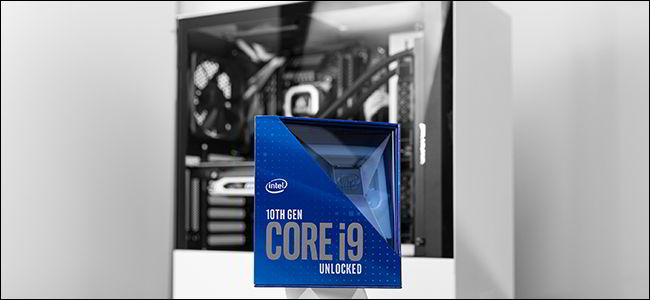
CPU speed is measured in gigahertz . In general, the higher the clock speed, the better the CPU will perform.
Consumer CPUs typically don't exceed 5 GHz, but Intel has found a way to eliminate this stereotype. Comet Lake CPUs use a new technology called Thermal Velocity Boost ( TVB ). This will push a single core to 5.3 GHz when the processor's temperature is below 70 degrees Celsius. That single core should be able to operate at higher levels in short bursts, which could help with gameplay. games and other high-clocked applications.
Core i9 Comet Lake PC CPUs also have a feature called Turbo Boost 3.0 Max. This will pick the two highest performing cores ( not all perform equally well ) on a processor and push them slightly higher for certain uses. such as playing games. This again results in a faster processor in certain workloads.
7. PCIe overclocking, but no PCIe 4.0
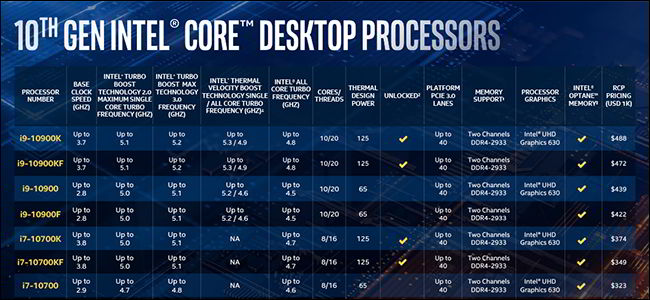
Some Comet Lake motherboards are capable of overclocking PCIe lanes to boost performance from components like the graphics card. This capability will vary from motherboard to motherboard, depending on the manufacturer to make this feature possible. This feature is mainly intended for those who are frequent overclockers, passionate about extreme computer computing.
What the new Intel CPUs won't have is PCIe 4.0 capabilities . They will stick with PCIe 3.0 instead . PCIe 4.0 helps components like graphics cards and storage drives work at twice their current speed. However all components: from the graphics card to the motherboard and processor must support PCIe 4.0.
AMD has support PCIe 4.0 in the processor Ryzen 3000 and motherboards X570 , but Intel chose not to follow that path. This is not unreasonable as AMD's X570 board requires a very good cooling system to 'cope' with this new version of PCIe.
However, some high-end Comet Lake- compatible motherboards are slated for an upgrade and will include PCIe 4.0 . This allows Intel in the future to somehow adapt to this connectivity standard.
Those are the main features of Comet Lake CPUs . There will be additional features included such as firmware for Ethernet and faster RAM optimization as well as built-in Wi-Fi 6.
Let's see in the next time, how the big guys Intel and Ryzen compete! Whatever the result, we - the 'users' are still the beneficiaries, the CPU is getting more powerful and the price is getting cheaper.
If you know any new technologies on Intel's 10th generation CPUs, don't hesitate to leave a comment and let's exchange knowledge together!
You should read it
- Intel ARC Xe-HPG 'Alchemist' GPU Leak: High Performance, Launching in 2022
- Unfair competition, Intel was fined EUR 1.06 billion in Europe
- Intel will unveil the 'new computing era' at IFA 2014
- Intel launched a super-saving computer model priced from 3 million
- Intel's 9th generation microprocessor can be released on October 1
- What is the Intel NUC?
 When to upgrade RAM for computers and laptops?
When to upgrade RAM for computers and laptops? Tips to fix the errors from the backup battery charger
Tips to fix the errors from the backup battery charger What is a fragmented hard drive? The cause and how to fix it
What is a fragmented hard drive? The cause and how to fix it Equipment can replace smartphones, TVs
Equipment can replace smartphones, TVs Review ThinkVision P27h-20 monitor
Review ThinkVision P27h-20 monitor IPad Air 2020 review: can I replace the iPad Pro?
IPad Air 2020 review: can I replace the iPad Pro?